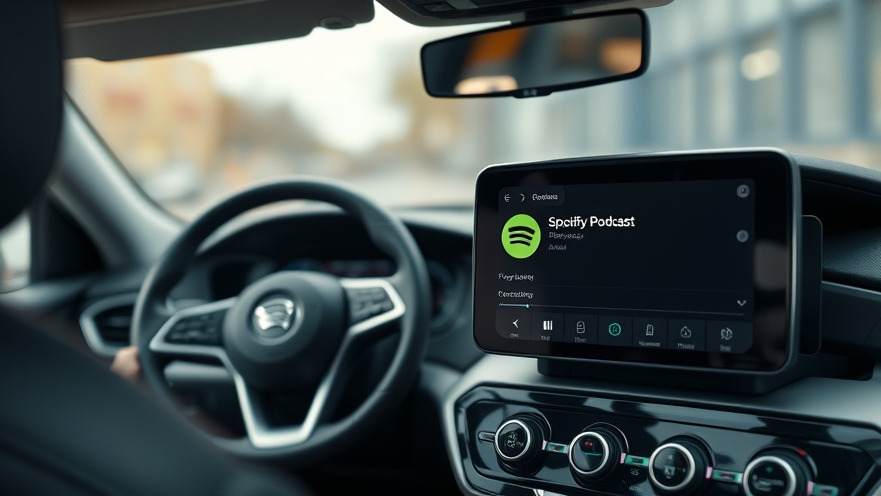
A New Era for Autonomous Rides: Music Meets Technology
Imagine gliding through the bustling streets of San Francisco in a car that drives itself, all while enjoying your favorite tracks. This modern experience is finally becoming a reality thanks to Waymo's latest integration with Spotify. After facing criticisms for its less-than-exciting music offerings, Waymo has made strides to enhance the passenger experience in its robotaxis, a move that reflects a broader trend in the intersection of technology and personal entertainment.
Why Music Matters in Autonomous Vehicles
While the thrill of riding in a self-driving car like a Waymo is remarkable in itself, the onboard experience is equally important. Until recently, passengers were limited to generic music options, leaving many dissatisfied. The addition of Spotify is significant, not just because of the service itself, but because it responds to the human desire for a personalized travel experience. When you’re in an autonomous vehicle, the ambient environment becomes more noticeable; having control over what you listen to can transform the ride from a simple commute into an enjoyable journey.
Bridging the Gap with Next-Gen Technology
The move to integrate Spotify into Waymo's service is not just about enhancing ride comfort; it also highlights the importance of seamless technology integration. This advancement illustrates the potential of AI-powered systems to revolutionize traditional industries. Nowadays, technology must work together fluidly, enhancing user experiences while also pushing the boundaries of innovation. As tech enthusiast and analyst comment, seeing such an elementary feature finally implemented underscores how essential user experience is—all products must evolve to meet consumer expectations.
Future of Music and Autonomous Travel
The introduction of advanced capabilities in robotaxis like Waymo’s can reshape not only urban transport but the broader landscape of how we think about travel and leisure. Will we soon see more extensive entertainment options in autonomous vehicles? Perhaps partnerships with other streaming services or even AR experiences to engage riders further? The evolution of such technologies will likely shape future industries, creating new avenues for both entertainment and business growth.
A Look Ahead—What This Means for Tech Innovations
Waymo's latest music integration is just a small glimpse into the vast potential of AI and robotics. As we move toward a more interconnected tech ecosystem, innovations like these foreshadow a future where transportation becomes an extension of our personal lives. Imagine AI-driven vehicles offering tailored music choices based on mood or conversations, enhancing not just the journey but also the destination. This shift will probably give rise to myriad digital solutions, potentially redefining how businesses leverage technology to meet consumer demands.
Conclusion: Embracing the Future Today
The integration of Spotify into Waymo’s autonomous vehicles isn't simply a convenience—it's a sign of what’s possible when technology continues to evolve with user engagement in mind. As we adopt these new conveniences, it’s crucial to recognize how they shape our experiences and what they mean for future innovations. It's time to embrace these advancements in transportation and entertainment as steps toward a more connected and enjoyable future.
 Add Row
Add Row  Add
Add 




Write A Comment